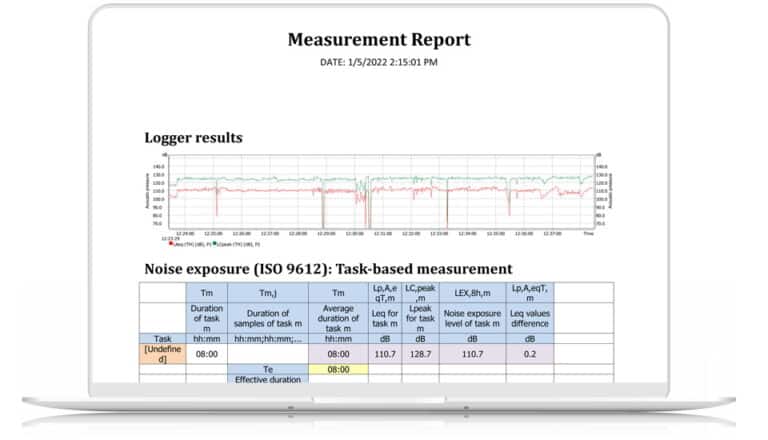Noise at work in the UK is regulated by the Control of Noise at Work Regulations 2005, and employers have legal obligations to assess and mitigate noise risks to protect employees’ health and safety.
Noise at Work in the UK refers to the regulations and guidelines that aim to protect workers from excessive noise exposure that could lead to hearing loss or other health issues. Governed by the Control of Noise at Work Regulations 2005, these rules set specific action and limit values for noise exposure levels. Employers are legally obligated to assess the risk of noise in the workplace, implement control measures, and provide necessary training and equipment to employees. The regulations apply across various sectors and settings, both indoor and outdoor, where noise could pose a risk. Monitoring tools like sound level meters and noise dosimeters are commonly used to ensure compliance. Failure to adhere to these regulations can result in legal action and penalties.

The risks of noise at work extend beyond mere discomfort, posing serious health and safety hazards. Prolonged exposure to high levels of noise can lead to permanent hearing loss, tinnitus (a constant ringing in the ears), and even psychological stress. In addition, excessive noise can interfere with communication among employees, leading to misunderstandings that could result in accidents or other safety incidents. It’s crucial for employers to recognize these risks and take appropriate measures to mitigate them, as mandated by the Control of Noise at Work Regulations 2005 in the UK. These measures include conducting regular noise assessments, implementing noise-reducing technologies or processes, and providing personal protective equipment like earplugs or earmuffs. Failure to manage noise risks adequately can result in legal penalties and compromised employee well-being.
Noise at work, as defined by the UK’s Health and Safety Executive (HSE), refers to sound levels in the workplace that pose a risk to the health and safety of employees. The HSE provides guidelines and regulations, notably the Control of Noise at Work Regulations 2005, to manage and mitigate these risks. These regulations require employers to assess the noise levels in the workplace, take action to reduce excessive noise, and provide appropriate personal protective equipment and training to employees.
The HSE sets specific action values and limit values for noise exposure. For instance, the lower exposure action values are set at a daily or weekly average of 80 dB(A), while the upper action values are at 85 dB(A). Employers must take specific actions if noise levels exceed these values, such as implementing engineering controls or providing hearing protection. Failure to comply with these regulations can result in legal penalties, including fines and prosecution.
Noise exposure in the workplace can lead to a range of adverse effects, primarily impacting hearing and overall well-being. Prolonged or intense noise exposure can result in permanent or temporary hearing loss and may cause tinnitus, a persistent ringing or buzzing in the ears. Beyond auditory issues, chronic noise exposure can elevate stress levels, leading to fatigue, irritability, and decreased concentration. This, in turn, can reduce productivity and impair verbal communication, increasing the likelihood of errors and accidents. Some studies even suggest that long-term noise exposure may elevate the risk of cardiovascular diseases and mental health issues like anxiety and depression. Therefore, controlling noise exposure is crucial for both the physical and psychological health of workers.
In the UK, noise becomes a workplace hazard when it reaches levels that could potentially harm employees’ hearing or overall well-being. According to the Health and Safety Executive (HSE), the lower exposure action value is a daily or weekly average noise level of 80 dB(A), and the upper exposure action value is set at 85 dB(A). Noise levels exceeding these values require employers to take specific actions to mitigate the risks.
Workplace noise hazards can arise from various sources, including machinery, power tools, heavy vehicles, and even certain work processes. Industries particularly prone to noise hazards include manufacturing, construction, transportation, and entertainment. Employers are obligated to assess the risk of noise exposure and take appropriate measures to control it, as stipulated by the Control of Noise at Work Regulations 2005. Failure to adhere to these regulations can result in legal consequences.
In the UK, permissible noise levels in the workplace are governed by the Control of Noise at Work Regulations 2005. The regulations set specific action values and limit values for noise exposure. The lower exposure action values are a daily or weekly exposure of 80 dB(A) and a peak sound pressure of 135 dB(C). The upper exposure action values are a daily or weekly exposure of 85 dB(A) and a peak sound pressure of 137 dB(C). Employers are required to take specific actions if noise levels reach or exceed these values. Additionally, there are exposure limit values that must not be exceeded: a daily or weekly exposure of 87 dB(A) and a peak sound pressure of 140 dB(C), taking into account any reduction provided by hearing protection. Failure to comply with these regulations can result in legal action and penalties.
In the UK, noise exposure is calculated using the Daily Personal Noise Exposure (LEP,d or LEX,8h) formula that adheres to international standards, particularly ISO 1999:1990. These calculations are crucial for complying with the Control of Noise at Work Regulations 2005. This level is calculated using the formula:
LEP,d=LAeq,T+10×log10(Te/T0)

A Noise at Work Survey is a comprehensive assessment conducted in the workplace to evaluate the levels of noise to which employees are exposed. This survey is crucial for complying with the UK’s Control of Noise at Work Regulations 2005. It involves measuring and calculating the daily and weekly noise exposure levels using the formulas based on ISO 1999:1990 standards, as well as identifying peak sound pressure levels.
The survey typically includes the following steps:
Identification of Noise Sources: The first step is to identify all potential sources of noise in the workplace, such as machinery, tools, and processes.
Measurement: Using specialized equipment like sound level meters and noise dosimeters, the noise levels are measured at various locations and times to capture variations and peak levels.
Employee Monitoring: Some employees may be asked to wear noise dosimeters during their work shift to measure their actual noise exposure.
Data Analysis: The collected data is analyzed to calculate daily and weekly noise exposure levels, as well as peak sound pressure levels, using the formulas specified in the regulations.
Risk Assessment: Based on the calculated noise levels, a risk assessment is conducted to determine if the noise exposure poses a risk to employees’ hearing and well-being.
Recommendations: The survey concludes with recommendations for noise control measures, which could range from engineering controls like sound barriers to administrative controls like rotating employees out of noisy areas.
Documentation: All findings, calculations, and recommendations are documented for compliance and future reference.
Employee Training: Employees are informed and trained on the risks associated with noise exposure and the protective measures in place.
Review: The survey should be periodically reviewed and updated, especially if there are changes in the workplace that could affect noise levels, such as new machinery or altered work processes.
By conducting a Noise at Work Survey, employers can ensure they are meeting their legal obligations to protect employees from harmful noise exposure.

Noise at Work software like Svantek Supervisor simplifies the management of occupational noise exposure by importing data from sound level meters or noise dosimeters used in the workplace. This data is then analyzed to calculate critical metrics such as LEP,d or LEX,8h, essential for compliance with regulations like the UK’s Control of Noise at Work Regulations 2005.
The software’s robust data analysis capabilities allow for the assessment of risk levels, identifying areas where noise exposure exceeds permissible limits. Comprehensive reports are generated, summarizing the calculated metrics, and exposure risk assessments.

In the UK, controlling noise at work is a multi-faceted approach that prioritizes engineering controls to eliminate or reduce noise at its source. This can include modifying equipment, using soundproof enclosures, and installing vibration dampers. Administrative controls, such as rotating shifts and designating quiet zones, are also employed to minimize workers’ exposure to harmful noise levels. Regular maintenance of machinery and employee training on the risks of noise exposure further contribute to a safer work environment.
Personal Protective Equipment like earplugs and earmuffs serve as a last resort when other controls are not feasible. Additionally, ongoing monitoring and assessments are crucial for ensuring the effectiveness of noise control measures. Software tools can assist in this by importing, analyzing, and reporting data on noise levels, thereby aiding in compliance with UK regulations like the Control of Noise at Work Regulations 2005.
